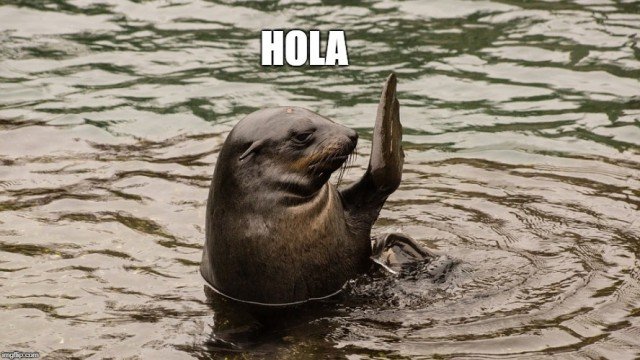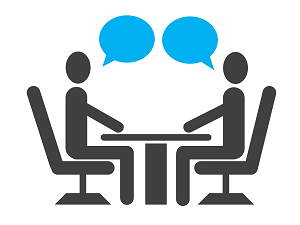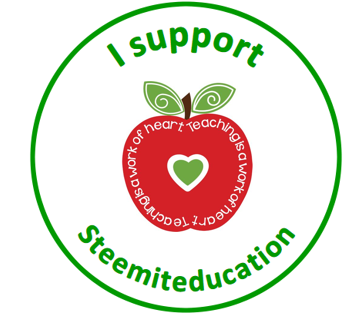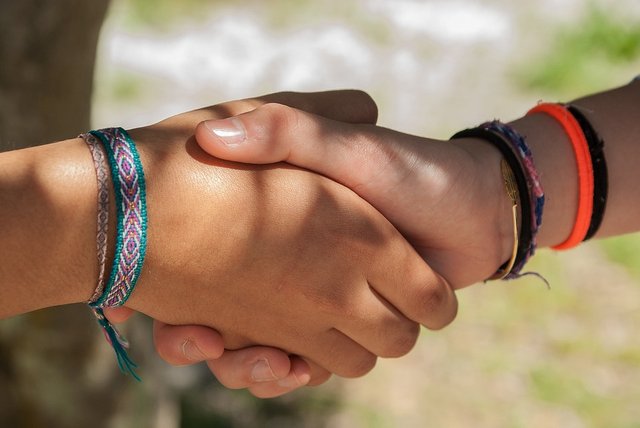Steem Spanish class: learn the most common greetings and when to use them.
When we start learning a new language, in most cases the first thing we learn is how to say “hello” in the most common ways. We also learn how to say “how are you?”, “Good morning” and basically all those simple words that will help us to communicate with others in very important situations.
However, we may get confused about the different ways of greeting people, since it all depends on the situation and the person we are speaking with. First off, it’s very important to know that there are two different types of communication in any language, the formal communication, and the informal communication.
The formal communication: In Spanish-speaking countries, you will need to use this type of communication in the professional area, at the university with the teachers, talking to a very important person, writing and important letter or professional Emails.
The informal communication: We use this type of communication with friends, family and people who are close to us. Some people may break this rule and be impolite, but this is not recommended (especially for someone who is still learning the language).
Now that we have identified the two types of communication, let’s learn the most common greetings and in which cases and situations you should use them.
¡Hola!

This is the most common one. When it comes to Spanish words, I would say this one is universal, because even people who don’t know anything about Spanish can understand it (there are exceptions though).
You can say “hola” to everyone in a casual conversation, regardless if you know them or not. Despite this word being very easy to use, there are some exceptions where I would recommend you not to use it.
1) In a job interview: Let’s say you are going to have a job interview with the boss of a very important company or organization, you go to the boss's office and when you enter, you say “Hola”. I’m almost sure the first impression they will have from you is of an impolite person. There are better greetings to use in this case, which I will explain further down. (If you make this mistake don’t worry it’s not the end of the world, just continue.)

2) In a public place to a group of people: If you meet a group of friends or your family, in order to avoid the sometimes tedious labor of greeting everyone, you can just say ¡Hola! To everyone and it’s ok. If you are in a public place (for example a hospital or the parents meeting at school), it will sound a bit weird if you enter and say “¡Hola!” as if you know them already.

3) Writing an Important letter: This also happens in English. If you want to sound sophisticated and professional, you should never say hello to start writing an important text or mail to an important organization.

So… in these cases, what should I say? (you might wonder)

This time I will teach you the 3 most-used phrases to avoid awkward situations and speak like a native Spanish speaker, but not only that … I will also teach you a trick to make your life easier!
They key phrases
1) Buenos días=Good morning
2) Buenas tardes= Good afternoon
3)Buenas noches=Good evening/Good night.
These phrases are not only used to wish someone a good day/night, but also to say hello in a more formal way. When you go to a job interview, a public place, or you are writing an important letter, use these three key phrases according to the time of the day, and you will sound very polite and natural!
The trick

In case you don’t remember one of those phrases there is a trick available, and the best part is that using it will make you sound like a native Spanish speaker!
The trick is to eliminate the time of the day and just say “buenas”. This is used in all Spanish-speaking countries, and people will answer you the same. So if you forget things easily, or you don’t know what time it is, just use “buenas”, as simple as that. Wherever you use this, it’s going to be a good way to be social and polite at the same time!
“¿Cómo estás?” and “¿Qué tal?”

These are other informal greetings. They both mean “How are you?” but they have a slight difference which is very important to notice if you want to sound natural.
¿Cómo estás? is more used in general. You can either say it in a formal conversation or in a more informal context. When you talk to older people, you should remove the “S” and say “¿Cómo está?” to sound more polite. Normally children and young adults call older people this way to sound more respectful. Never delete the S when you are referring to children, or teenagers, it’s not bad, but they can laugh at you since we are not used to saying it that way.
¿Qué tal? It’s an informal way to say the same thing. This is mostly used with your friends and people who are close to you. Also in a very informal context, for example if you know a person at a party and you want to sound cool, you can say “¿Qué tal?”. Never say this if the context is formal, otherwise you are not going to be taken seriously.

This is all for today, and as you can see even the simpler things can be a bit confusing when it comes to languages. I hope these explanations will help you sound more natural!
It’s been one month since I posted the previous Spanish class. But there is GOOD NEWS, from now on, I will be posting at least one Spanish lesson per week. Please feel free to leave a comment down below asking your questions with Spanish, and I will happily create an article about it. Thank you for reading!
Images sources: 1, 2, 3,4, 5, 6, 7, 8


A very awesome class ...i kept being updated about it😃
Thank you! Spanish is a very important language, it's nice that you keep always updated about it :D
Best Spanish Post
Nice post :) But it is quite easy for me now lol!!!
Hey bro! nice to see that you are back
lol, it's true this lesson is more for beginners but I will also create lessons for more advanced students, feel free to make your Spanish questions and I will answer them in the next lesson!
This is so helpful!
Thanks for sharing with us the basic greetingss in Spanish. :)
I'm glad this was helpful for you! thank you for the support, there will be lessons every week :)
I'm glad this was helpful for you! thank you for the support, there will be lessons every week :)
That will be nice!
I guess I'll start by saying Gracias for all the effort of bringing the Spanish language with us!
"Que tal" y "hola" es casual, mientras "buenas" y "como estás" es formal. Ok, gracias, no conoscia "buenas". Hoy aprendí un poco más!
Me alegra que hayas aprendido algo nuevo!